Holà from Fuerteventura! Have you ever heard of the Beach of the Canary Islands? Fuerteventura is the second biggest island of the Canary, after Tenerife, and is the closest to Europe, only 97km off the coast of Morocco! It is probably the most underrated Canary Island. People often said that it lacks wow-places but let me tell you chances are it will blow your mind! Picture stunning white sand beaches and crystal clear turquoise waters, year-round sunshine, Martian-like landscapes, blown by the wind and baked by the sun, very picturesque isn’t it! Once you got a taste of it, you won’t want to leave! It was also designed a UNESCO Biosphere Reserve in 2009. Keep reading for the ultimate travel guide to Fuerteventura to help you plan your best trip.
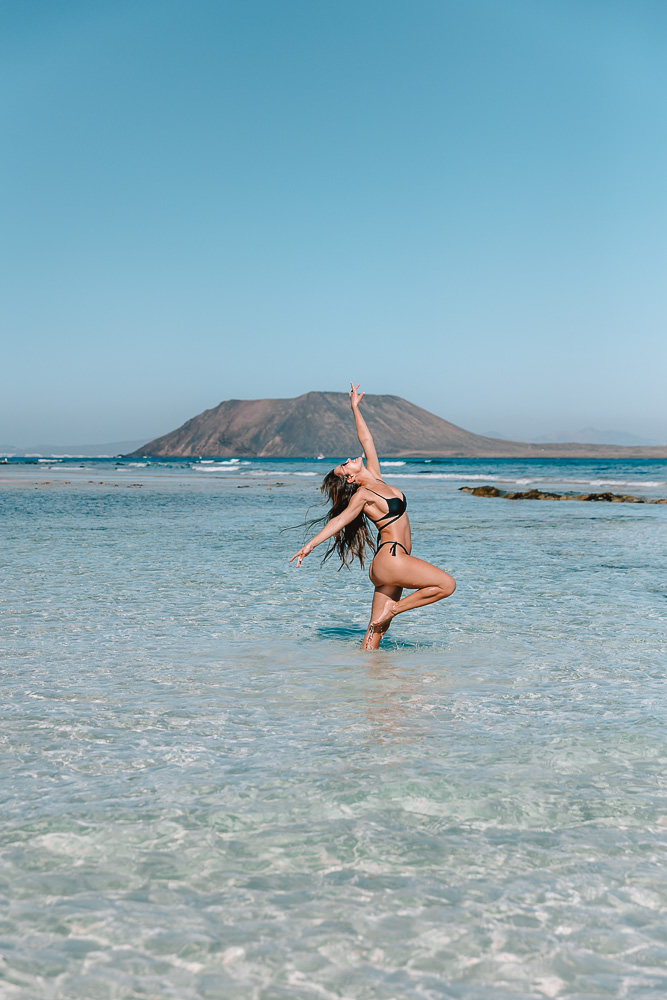



I’m very excited to write this blog post. Perhaps because my first trip there was eye-opening and a true self-discovery experience. Fuerteventura is an island that surprised me in ways I didn’t think it would. I first intended to stay only for a week and ended up coming back for five, and then multiple times again. I met strangers who became friends, I found places that exceeded my expectations, and for the first time in a long time, I felt spectacularly myself and present. As much as I absolutely love to create and take photos, my favorite kind of trips are the ones where I come back bursting with stories to tell and things to say. This trip offered the most beautiful balance of both and I am so grateful.
General Info
Language
In the main towns, everyone speaks English, at least enough to understand you in restaurants and shops. In more secluded areas, it might be a good idea to learn a few words of Spanish though.
Best time to visit
The best time to visit Fuerteventura is from autumn until beginning of spring (from October to February) when the weather is warm and pleasant but not windy. Shoulder season (March to May) is also great, as not too hot but a bit more windy. From May onward, it gets (very) windy and is the perfect time for kite-surf! The good thing is that it never gets too hot nor too cold there!
Where to stay
Fuerteventura is quite small (210km from one end to the other) so you can easily have a single base and explore from there. Another option is to split your time between the north and the south. If you do so, I’d recommend to spend most of your time in the north in Corralejo, and a night or two in the south, in Morro Jable for example.
- Grandes Playas, Corralejo
- Dunas Club, Corralejo
- Brazan Holidays, Corralejo
- Casablanca Suites, Morro Jable



Transportation
You will need a car to visit most places. I recommend hiring one with the local company of the Canary Island Cicar. I’ve hired with them multiple times and found them to be the most affordable as well as having great customer service. Their price also includes an extra driver and insurance so you don’t need to worry about the car! If you aren’t able to hire a car, then there are a number of tours that you can book to explore the island:
Experience Canarian Cuisine
Spanish food is often synonymous with tapas and so is canarian food! Due to its location, the Canary Islands were for centuries the crossroads between Europe and Latin America, creating a melting pot of culinary influences. In addition, its volcanic soil and mild temperatures give its home-grown produces a unique flavour. This includes excellent volcanic wines, especially from Lanzarote, ‘queso de cabra’ goat cheese from Fuerteventura, ‘palmero’ and ‘Flor de Guia’ from Gran Canaria, la Palma honey, etc.
Canary Islanders believe that their food is part of their identity, of vital importance in their culture and in their daily lives. So I would highly recommend to eat like – if not with – the locals! Tavernas, family-run restaurants and street food are probably the best places to try Canarian cuisine.
Fuerteventura specialities
Fuerteventura is especially known for its fresh seafood and goat cheese, and my favorite dishes are:
- Papas Arrugadas: small potatoes boiled in their skin salted water and served with mojo picón sauce, a delicious spicy sauce made with garlic, olive oil, red or green pepper, cumin, salt and vinegar.
- Queso de Cabra a la plancha: the local goat cheese fried with jams is simply so delicious.
- Gambas Ajillo: typical garlic prawns.
- Barraquito: a multi-layered coffee liqueur drink (though non-liqueur versions are available) normally served in a glass to enable easy viewing of the different layers, which are (in order) condensed milk, liquor 43 (a Spanish vanilla-fruity liquor), expresso, frothy milk and cinnamon. It’s way too sweet for my personal taste but it’s a must-try as you can ONLY find it in the Canary Islands!
- Ronmiel: Honey & rum digestive from the Canary, very sweet and so easy to drink!

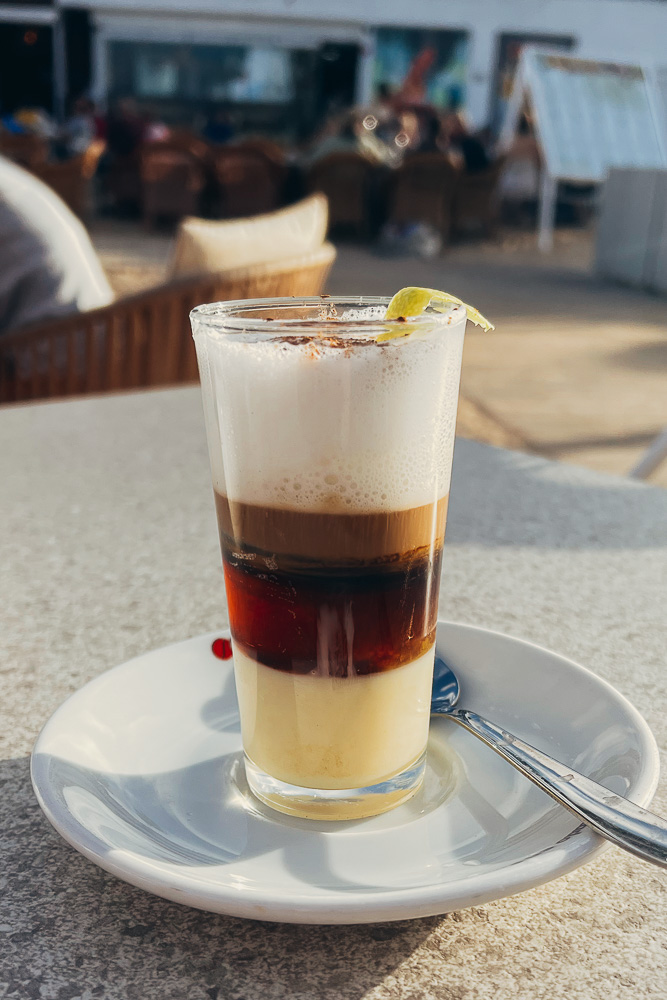

Canarian wines
As for the wine, I would recommend trying the wine from La Geria, in Lanzarote, as it is the closest to Fuerteventura. If you have a car, I highly recommend you to spend a day or two on Lanzarote as it is only 20min away by ferry. Or you can book a Volcano hike and wine tasting tour and not worry about driving! They have a few endemic grapes varieties which combined with the volcanic soil make for some unique and delicious wines such as:
- Malvasía Volcánica Blanco Seco
- Malvasía Volcánica Semidulce
- Tinto Joven Listan Negro
- Moscato de Alejandra (sweet wine made from Moscatel grapes)
The Ultimate One-Week Itinerary in Fuerteventura
Fuerteventura has something for everyone, from water sports to hiking, beaches or sightseeing. Here is the ultimate one-week itinerary in Fuerteventura, from north to south. Everything is easily reachable by car from Corralejo, and from Morro Jable for the very south part.

Day 1: Corralejo and around
At the northernmost part of Fuerteventura, Corralejo used to be a fishing town with only gravel roads not so long ago. Hard to believe as it is now a vibrant town, with lots of digital nomads, an amazing food scene, great water-sports activities and a great night life! But, most importantly, it has an extensive coastline of heavenly beaches with fine golden sand and turquoise crystal clear waters and the biggest sand dunes in the Canary Islands!
You will find some “popcorn” looking white beaches in some areas, there’s actually even a beach called “Popcorn Beach”. Those popcorn are in fact fossilized corals that eventually will desintegrate into a white sand.
Tips: Some of my favorite beaches are Playa de Corralejo Viejo in the center and Playa del Pozo closer to the Dunes.
Sunsets in Corralejo are incredible from the beach, especially next to Sunset Lounge. Personally, my two favorite spots are the Clock Tower Campanario (opens daily 8am-8pm) and on the pier, on the rocks next to the lighthouse.




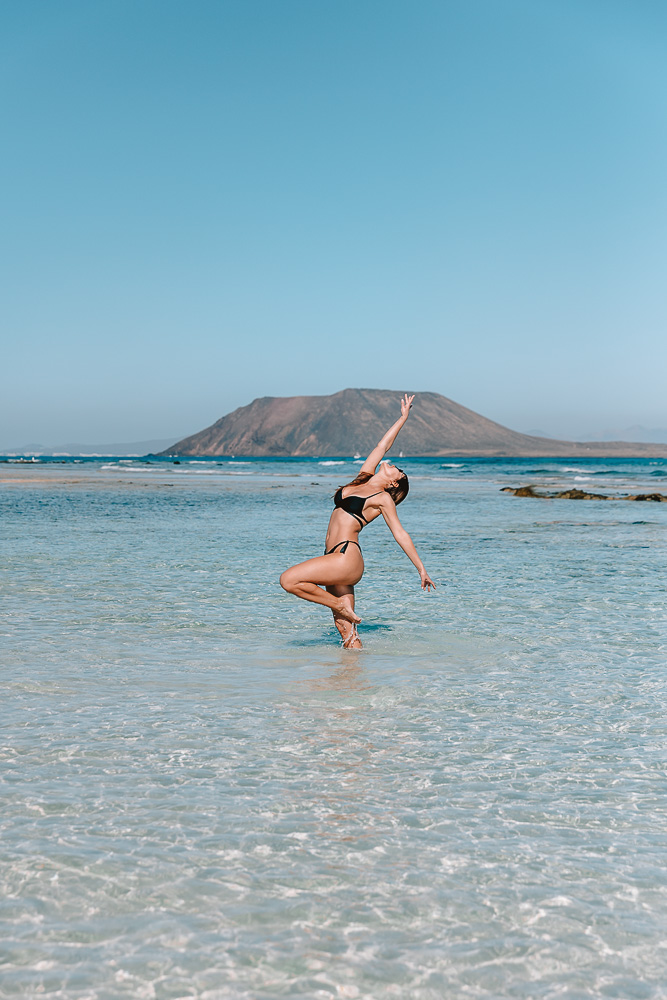
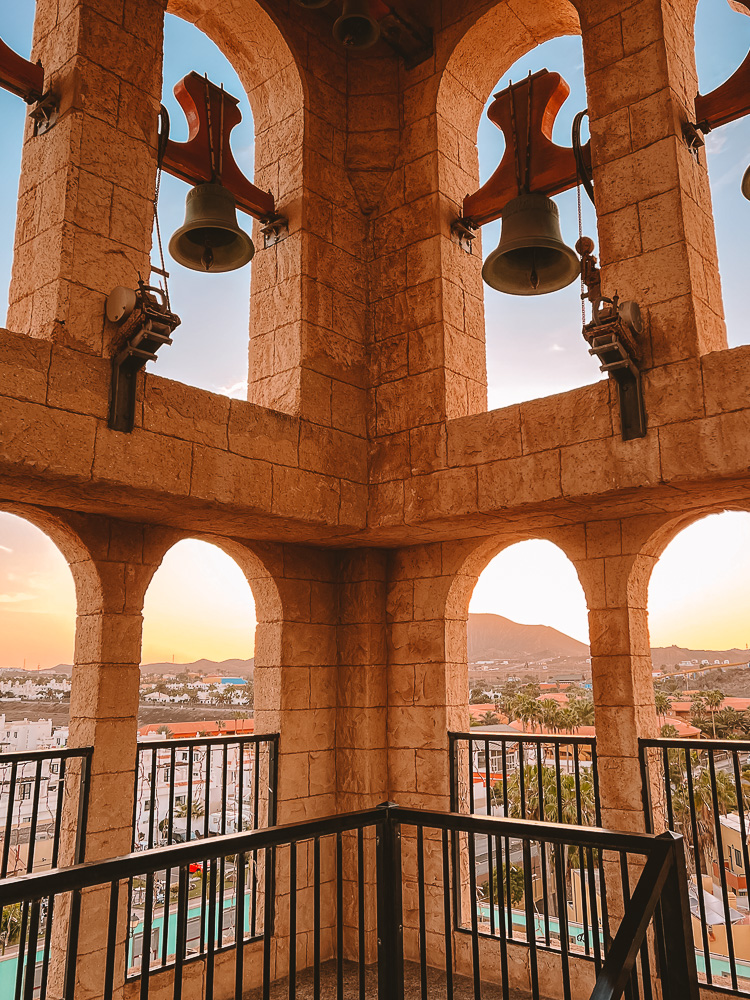
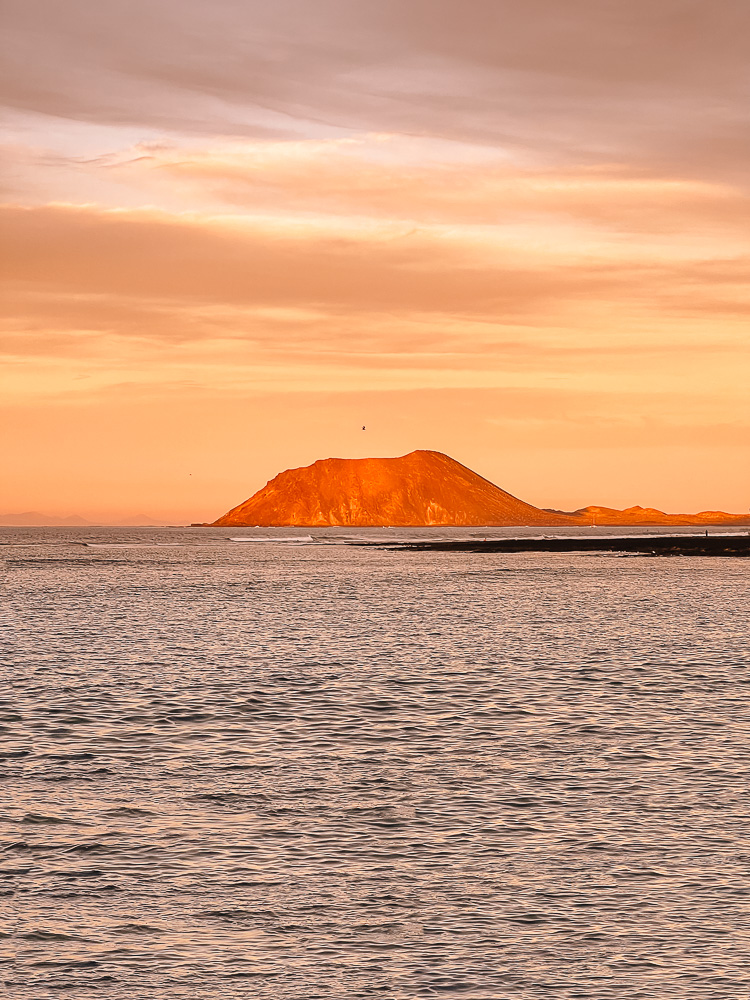



Dunas de Corralejo
Dunas de Corralejo are the largest sand dunes in the Canary Islands and form the Corralejo Natural Park, spanning across 26 square meters.
This nature park of yellow dunes stretches along the east coast for about 10km south from Corralejo. Breeziness also makes it popular with windsurfers and kiteboarders.
Exploring the Dunas is by far my favorite thing to do in Corralejo! It is also a beautiful sunrise/sunset spot and a great place to watch the Milky Way!
Tip: park at Moro Beach or at Aparcamiento Playa de El Moro and cross the road to find the best spots in the Dunes!

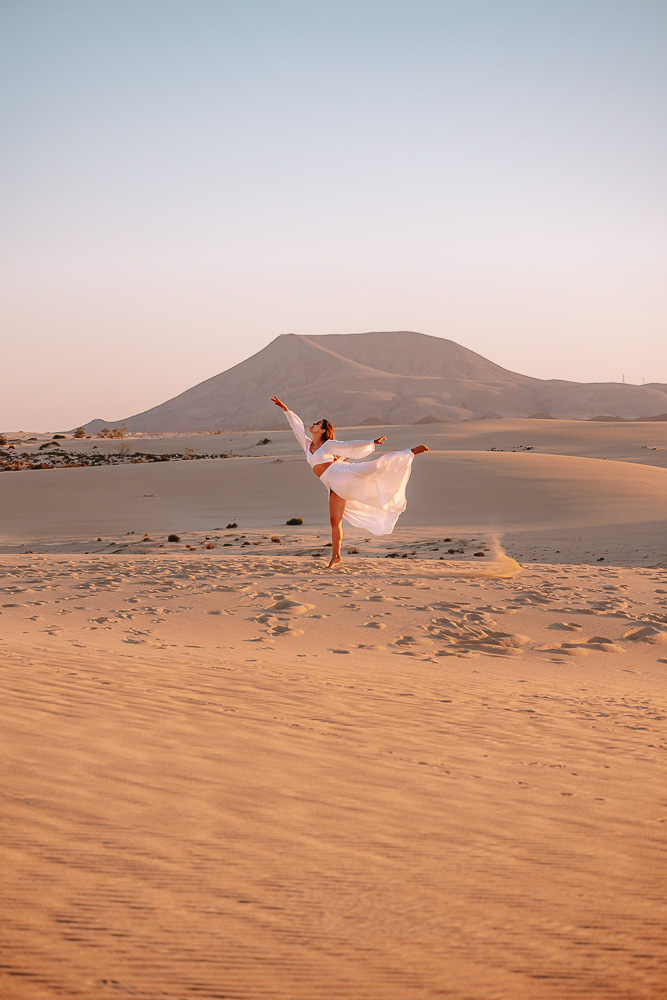






Majanicho
Majanicho is a very small fisherman village, unknown from tourists, mostly known by locals and surfers. This is what Corralejo used to look like a few decades ago, no asphalte road, no apartments, only a few fisherman houses, boats, and quietness. It is the kind of place you go to to enjoy silence, meditate, and appreciate the beauty of the ocean.
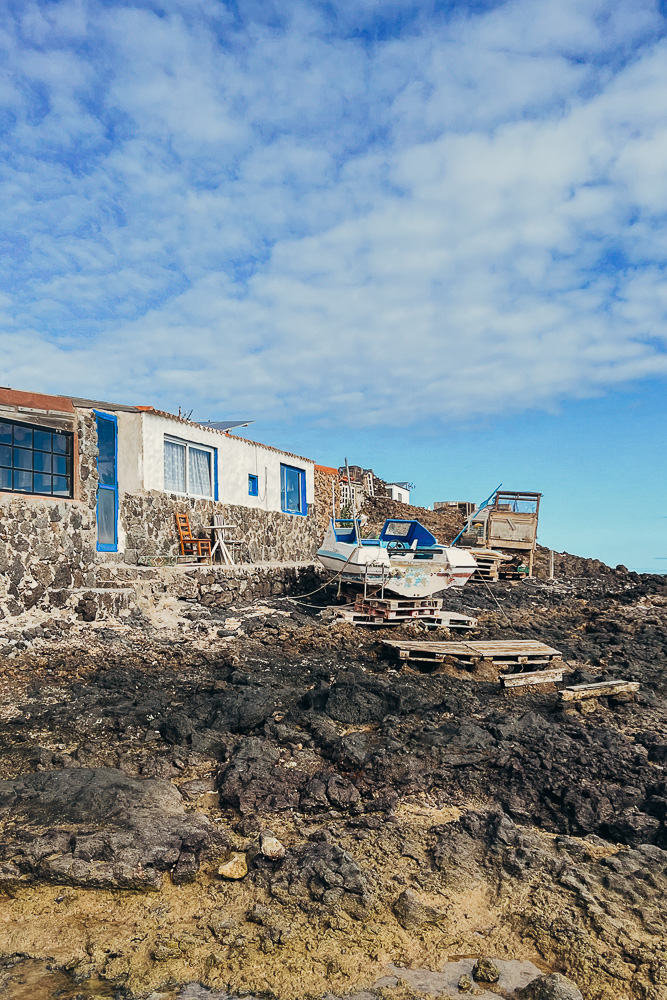

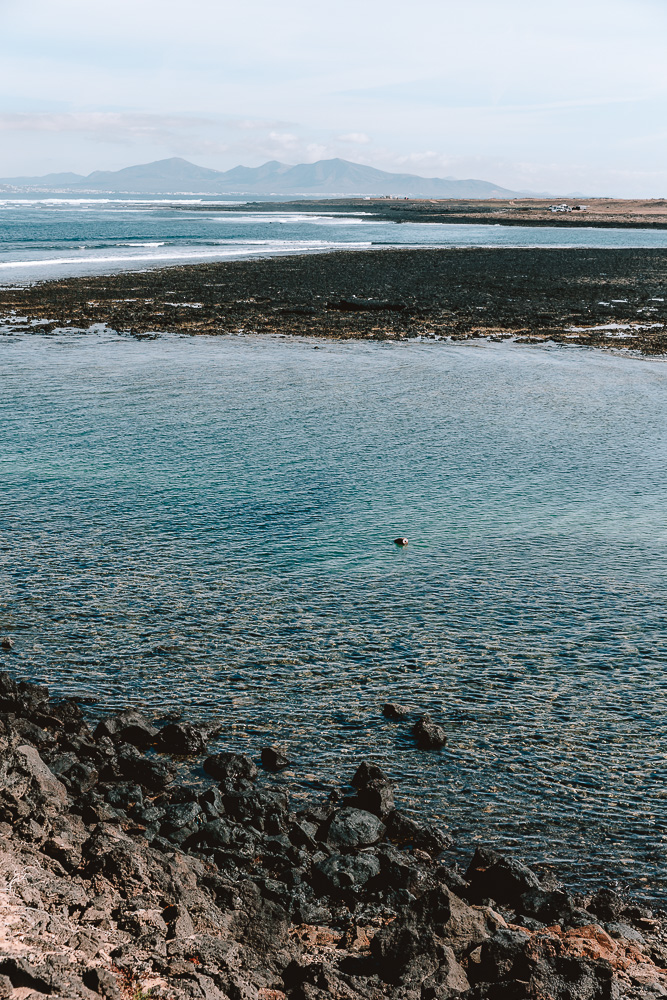


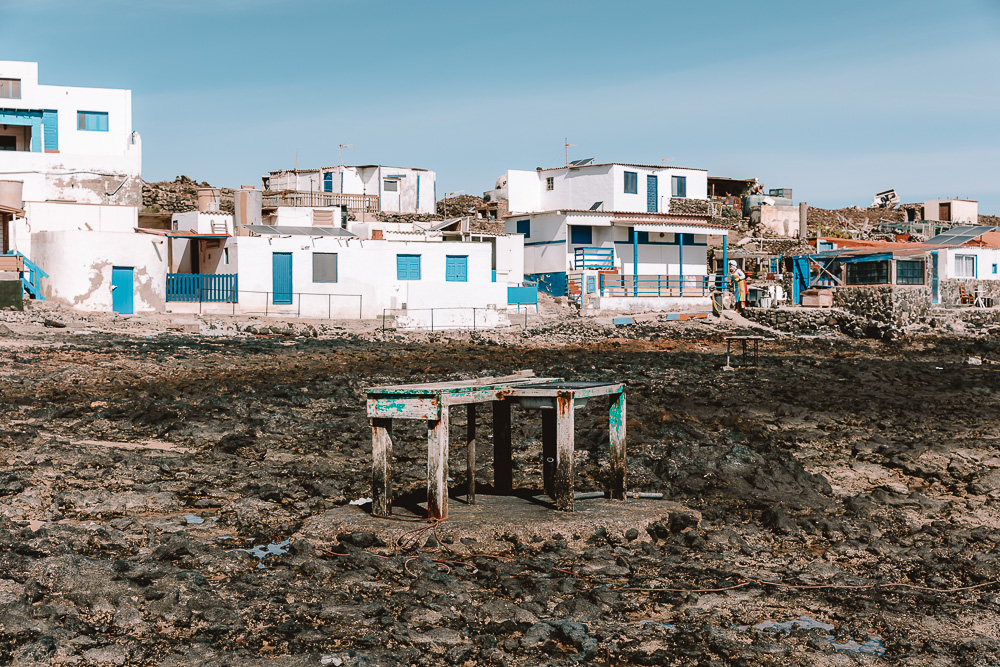

Calderón Hondo
Calderón Hondo is one of the best preserved craters in Fuerteventura. Its eruption occurred between 50,000 and 130,000 years ago, so relatively recent considering the island’s formation (which was about 30 million years ago). From the top, you will get majestic vistas of the crater, the surrounding badlands, and Lanzarote.
From the east part of Corralejo, start the Camino Natural de Fuerteventura to reach the Calderón Hondo (7km – 1h30 one way). It is a very easy walk, on a large gravel road, going up gently towards the crater. The last part is a mix of stairs and loose rocks and need a bit more attention, although nothing dangerous. The path is part of the GR-131 trail network that cross 6 of the 8 islands.
On your way there you’ll meet plenty of chipmunks, those cute little earth squirrels that can be quite mean! Please keep in mind that you are not supposed to give them any food as they are wild animals.
Another option is to drive to Lajares and park at the top to walk just the last part (30min return more or less).
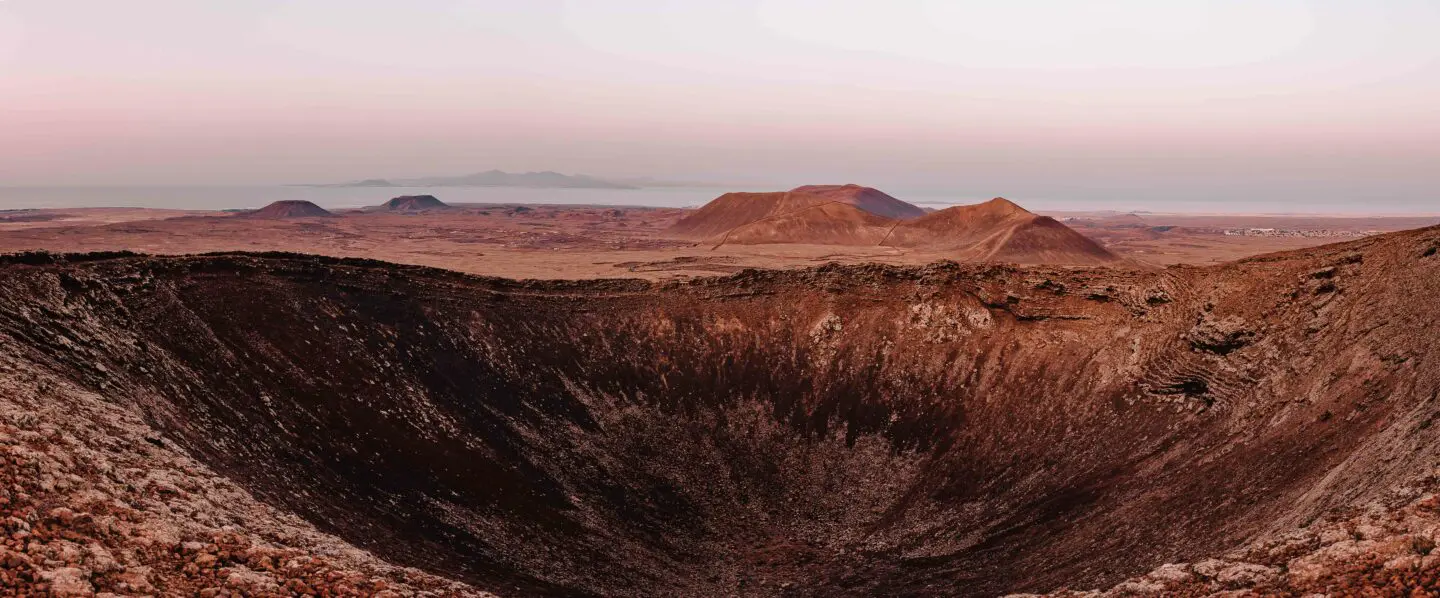

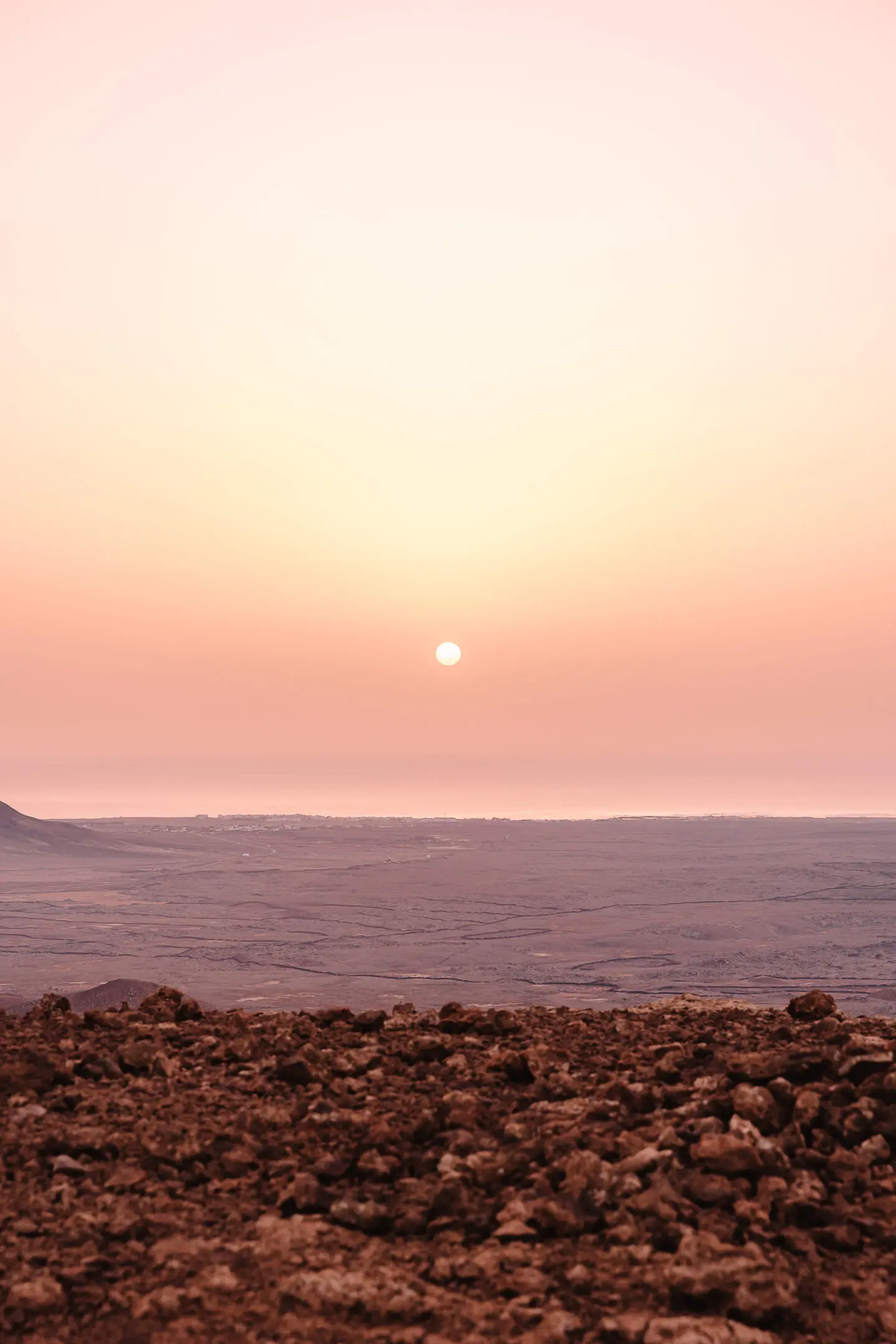
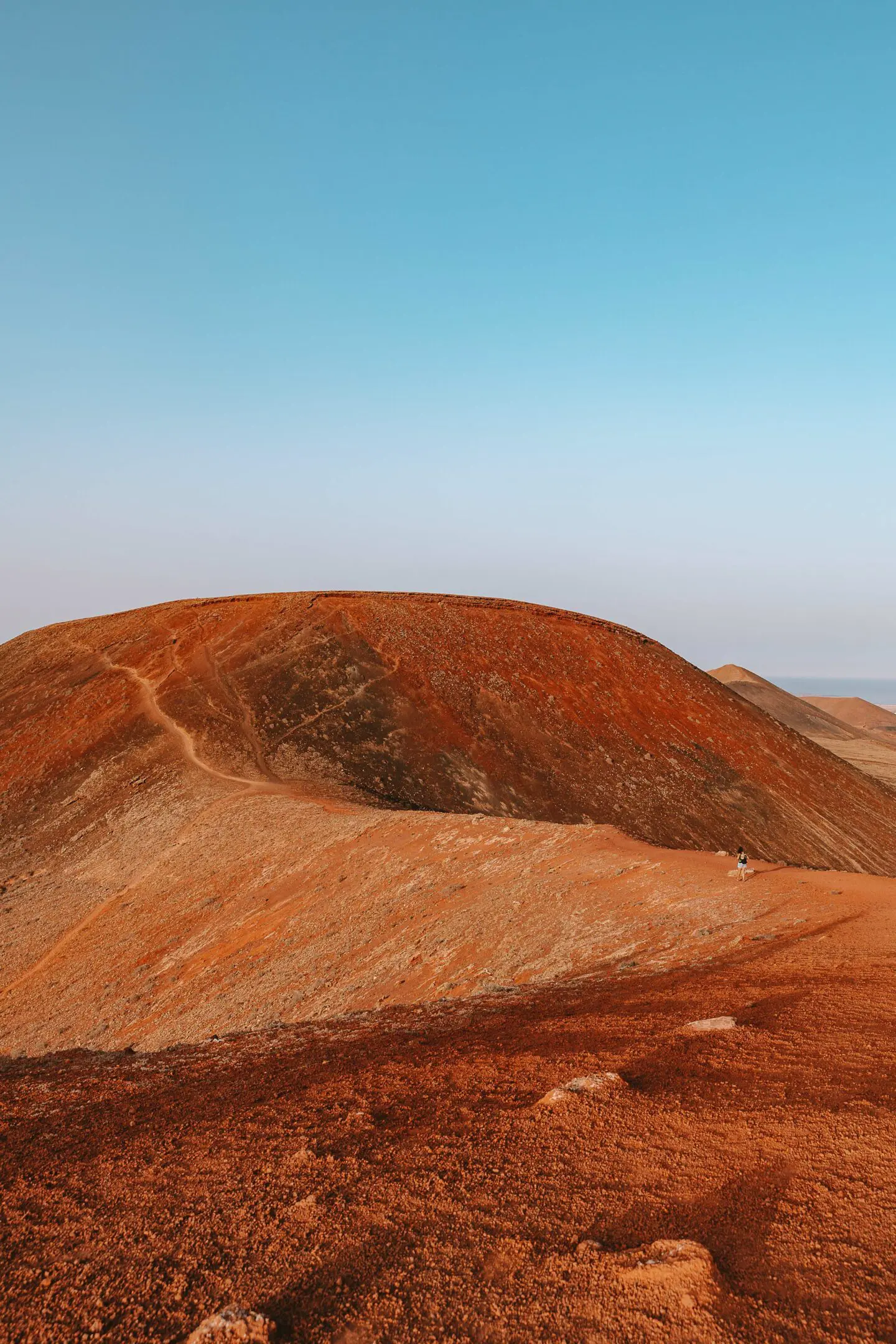
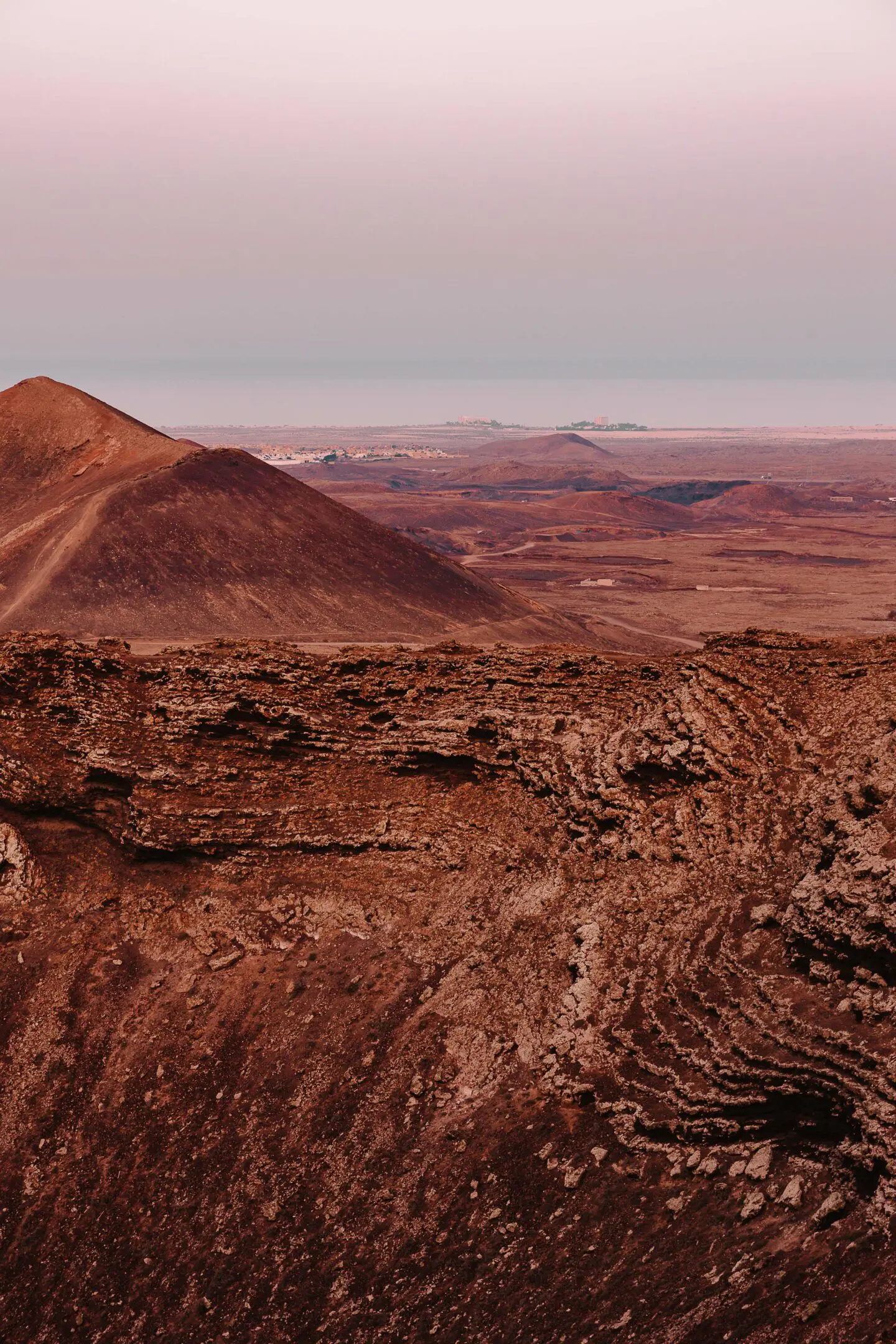


Eat here:
- Cecicafe: my personal favorite small coffee shop, perfect for breakfast or lunch, delicious, lots of vegan options and cheap!
- Gilda Casa de Pinchos y Tapas: best papas arrugadas and queso de cabra a la plancha & padron de pepper
- Pizzeria Peperone: best pizzas in town, according to Italians!
- Pulperia Dejavu: delicious octopus and tapas, and delicious wines!
- Uga-Uga: delicious and cheap breakfast with a view on Lobos Island
- Vrebac: best italian gelato, give the avellana (hazelnut) a try!





Days 2 & 3: El Cotillo and around
El Cotillo
El Cotillo is one of the most beautiful villages of Fuerteventura. It became quite popular in the last few years but still managed to keep this authentic feeling. The beach of la Concha is one of the best beaches on the island and is also one of the best sunset spots!






Playa del Aguila (de Escalera)
My personal favorite beach on the island! I just love all those staircases bringing your down those steep cliffs to a perfect fine sand beach. The only access is by gravel road from El Cotillo, quite easy to drive on.




Barranco Encantado / de los Enamorados
“Barranco” translates as “ravine of small boulders”. Those fossilised sand banks were created when the sea retracted, up to 135,000 years ago. It is a unique paleontological area and one of the most hidden gems of Fuerteventura! It has been declared Heritage of Cultural Interest in 2008 and are fully protected.
Park at the end of the gravel road coming from Playa del Aguila. Make sure to walk all the way to the north as this is where are the most beautiful formations!



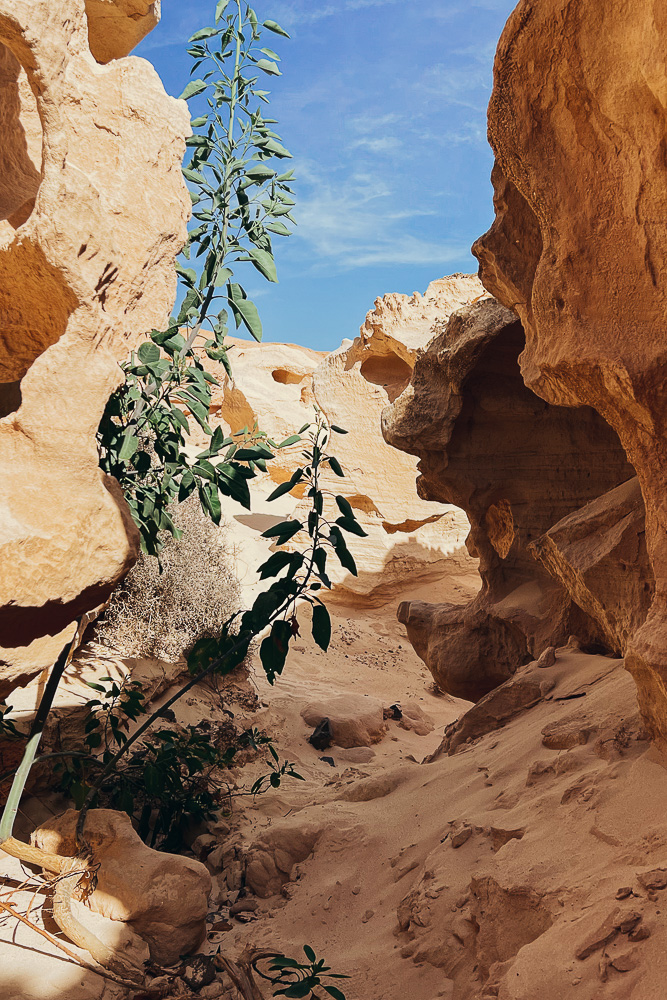




Molinos de Villaverde
Grain milling was a pillar of the economy back in the 18th century and as the population increased, so did the production. Fuerteventura, the island with strong winds, was perfect for windmills. So they built the first mills in the beginning of the 19th century and you can still find many of them on the island now! I love the ones from Villaverde as you get a nice view over the village and the volcanoes!


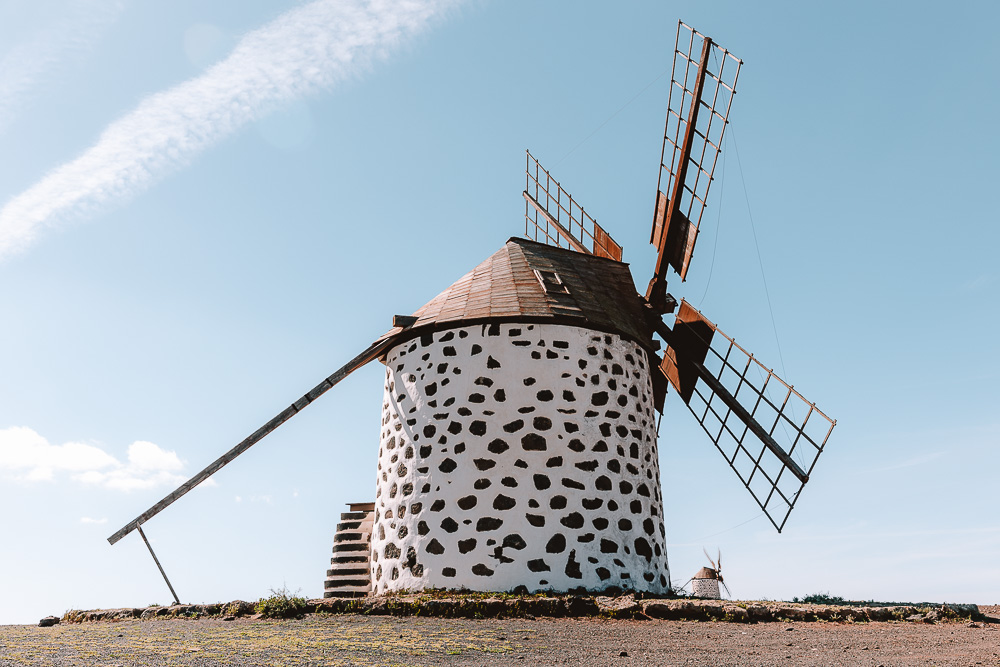
Eat here
- Tsunami: some of the best burgers I ever had! They change the menu almost every week but if you get a chance, try the pulpo burger or ask for their vegetarian burger of the day!
- El Moral: Typical cuisine from Canary Islands & Spain, with lot of vegetarian options.
- Restaurante Casa Marcos: haven’t get a chance to eat there yet but got the recommandation from some of my local friends.
Days 4 & 5: West coast
The West coast of Fuerteventura has the most spectacular and rugged coastline, as well as some of the best beaches.
Puertito de los Molinos (marcher jusqu’à la Cala)
A beautiful black sand & pebble beach, perfect spot to watch the sunset! If you get there at low tide, make sure to walk past the bar, on the right hand side of the beach, towards la Cala, a little creek very quiet. Just keep in mind to go back before high tide! Note that there is absolutely no cell reception there, but the bar at the top of the carpark does have wifi.
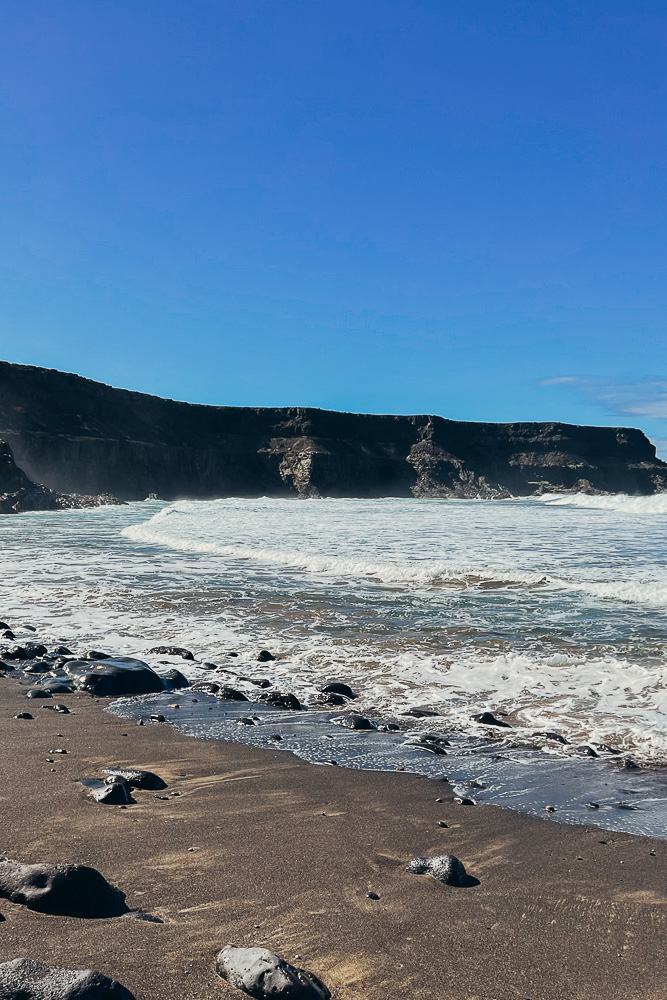
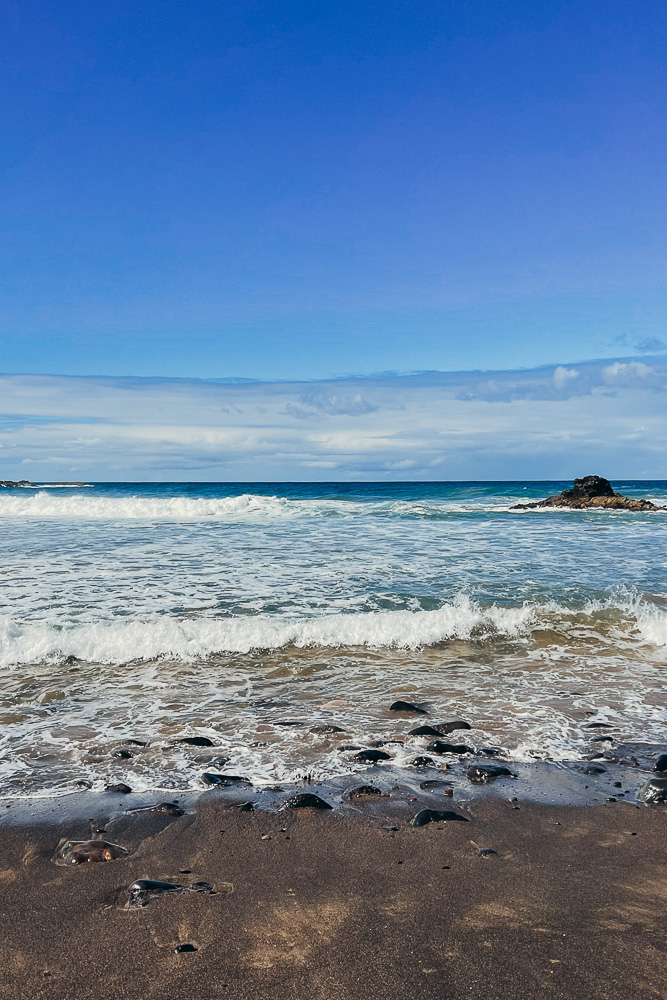


Aguas verdes (piscina naturale)
Come at low tide, roughly 1-2 hours around it, and walk through the rocks to find the most impressive & beautiful pools. Their distinctive green colour comes from the algaes that are present on the rocks.



Betancuria
Betancuria is the historic capital of the Canary Islands Kingdom. It was founded in 1404 by the Norman Conquerors, and the city owes its name to Jean de Bethencourt, leader of the conquering army. The Church of Santa Maria de Betancuria is probably the most iconic and photographed place in the town.




Arco de las Penitas
It is a stunning natural arch in the Barranco de las Peñitas. The name translates as “ravine of the small boulders” and honestly, it is just that: countless little boulders and unique rock formations that have been carved out of the volcanic rock by time and the elements.
It isn’t the easiest place to find nor the easiest hike so make sure to bring proper hiking shoes and enough water. Once you parked, head north from the carpark (on the left-hand side when coming from the road) and follow the quite well-delimited path. After a few hundred meters however, it is just rocks with a tiny path winding between them. I suggest you follow one of the hiking trails that you can find on AllTrails or Visorando, like this one. There’s one or two sections that are more like rock climbing so make sure to bring proper hiking shoes.
You can go down using the same path or cross the arch and go down from the other side. Which is what I did and it was way easier than going down with the way up! If you follow the hiking trail on the app, it will be even easier.
Tip: Park at the end of the road Pajara. No need to stop at the end of the asphalte road, the gravel road is perfectly fine.

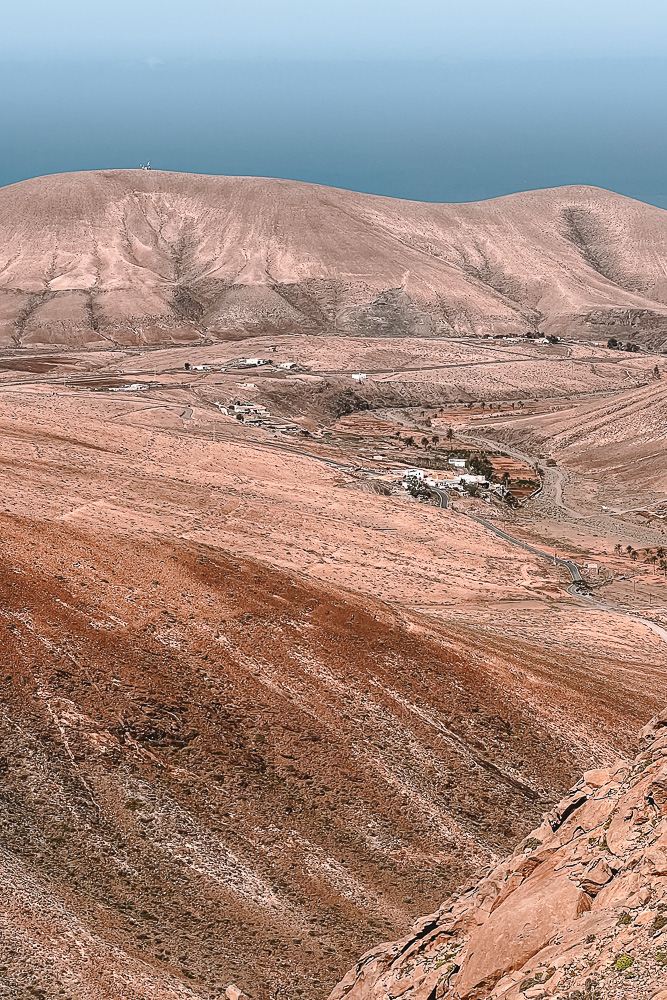



Ajuy
Ajuy is a beautiful fishing town set on a black sand beach that is mostly famous for the oldest cave formations in the Canary Islands. Declared a Natural Monument in 1987, they are part of Betancuria Rural Park, which means they are fully protected.
Ajuy caves were created by the submarine flow of lava and sediment that rose to the surface and began to form the island 100 million years ago in the Cretaceous period. The rocs emerged from a depth of 3,000 meters and started to form the base that these days supports both the islands of Fuerteventura and Lanzarote. The caves are extremely important from a geological and paleontological perspective and are among the 150 sites of primary geological interest in the world!





Days 6 & 7: South
La Pared
Great place for surfing, kite surfing or paragliding! As always on the west coast, it’s not recommended to swim due to strong currents and waves.
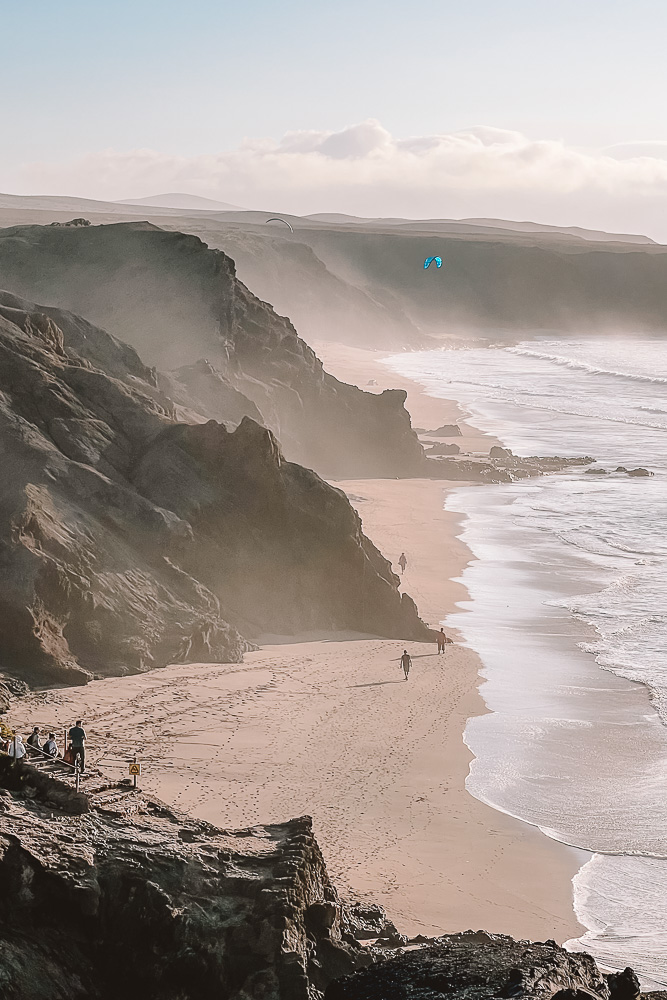


Mirador Astronomico de Sicasumbre
If you want just one place for the full-on, wide-angle perspective of the incredible arid landscape of Fuerteventura, this mirador is your place. The Mirador de Sicasumbre has breathtaking views over copper-coloured hills, valleys and ravines. If you come for sunset (and you should), make sure to cross the road and go up the little hill next to the small carpark. From there, you’ll have the best view on the sun setting down on the ocean. At night time, it is even more astonishing and a great stargazing spot for deep views of the Milky Way (from May to October). And if you like sunset picnics like me, bring a bottle of wine and some crakers and cheese to do an aperitivo up there!


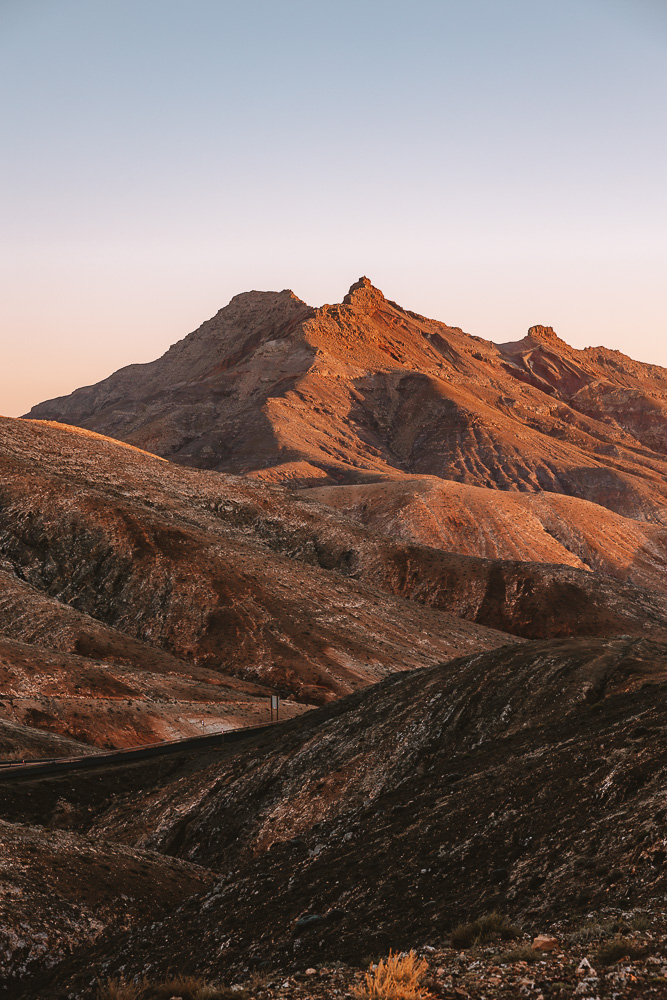



Sotavento
Sotavento is a secluded fine sand beach that stretches for over 6km. These sand bars and turquoise lagoons are created at high tide (over 2m). For the best spots, park at Playa Risco del Paso carpark. Keep in mind that this is the most windy place in Fuerteventura (hence the name)! It’s the best place to learn kitesurfing!







Morro Jable
Morro Jable is located at the very south end of Fuerteventura. While Corralejo is mostly Italian, Morro Jable is mostly German with lots of them having chosen Morro Jable for long stays or permanent residence. It is also probably the most developed tourists-oriented town in the island with lots of resorts and big hotels. For that reason I didn’t really like the atmosphere there. However the promenade along the beach with great restaurants and fresh fish is lovely! The main reason to go there for me is the dreamy picture-perfect beach! Fine white sand and crystal-clear turquoise water with the dark cliffs falling down the beach make for the perfect place to spend a day or two!
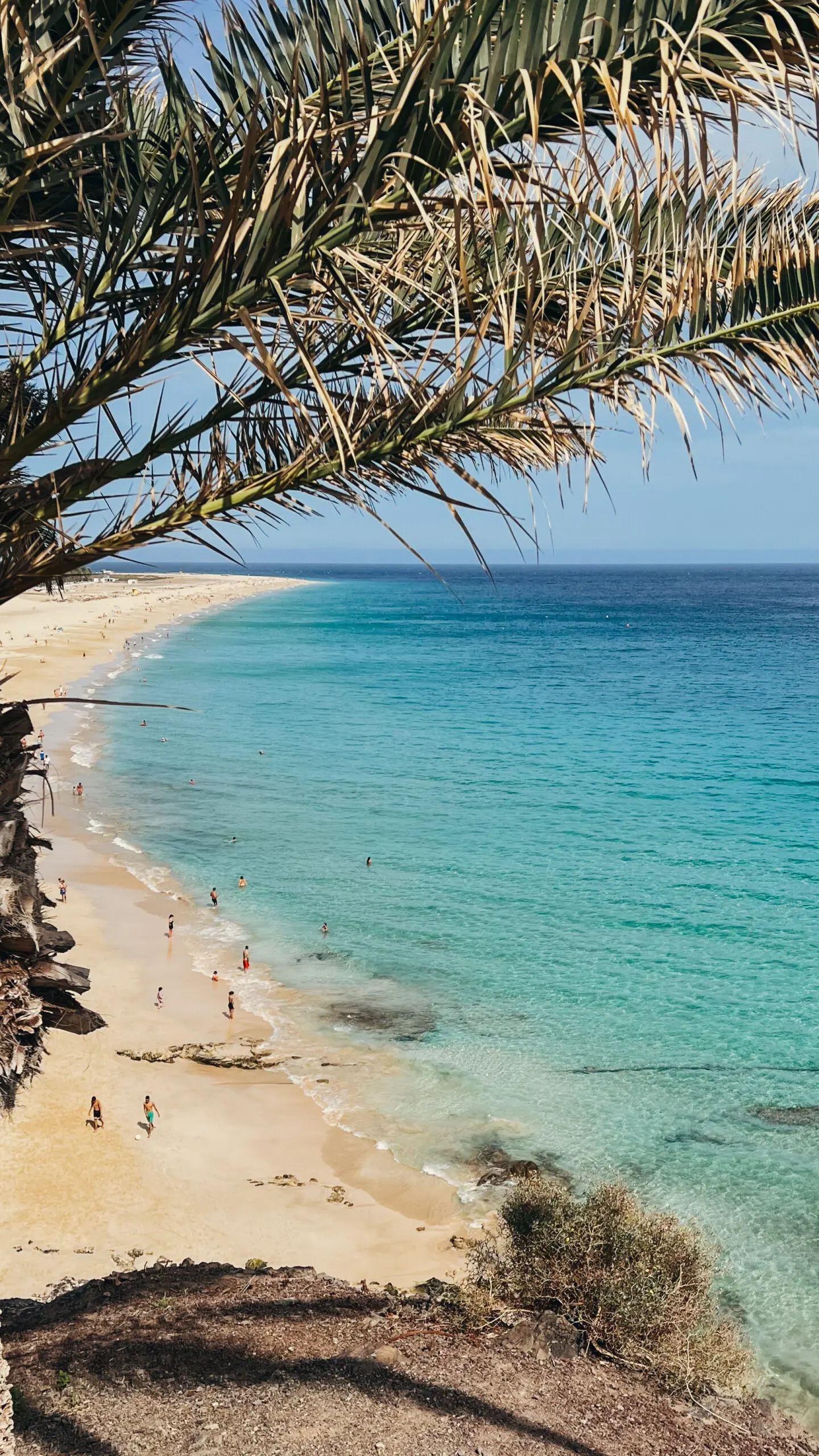


Cofete
Cofete beach is the wildest, most rural beach in Fuerteventura. Near the southern tip of the island, it is quite long to reach but it is a must! It’s huge, quite beautiful and entirely undeveloped. The road is unpaved, quite long and windy but it’s in pretty good condition (no pot holes nor gravel). However most rental cars companies don’t cover insurance there, so drive carefully if you decide to go! Keep in mind that it’s very very dangerous to swim/surf there because of strong currents.




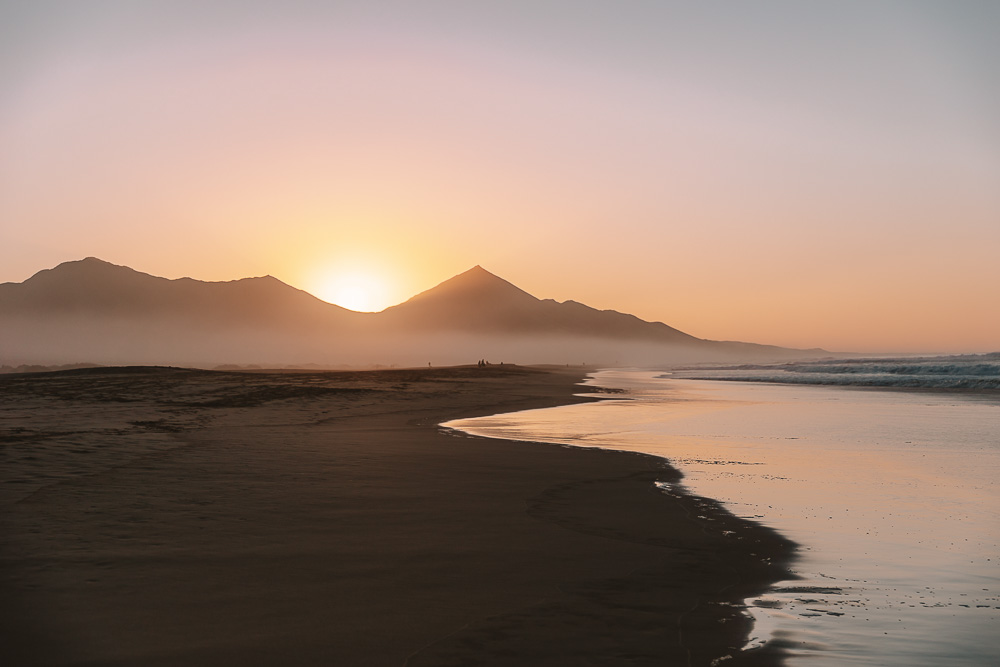

A day in Lobos Island
Lobos Island is a nature & underwater reserve, a beautiful unspoiled island only 15 min away from Corralejo by speedboat. It takes its name from the monk seals that used to inhabit its coastline, before going extinct in the Canary Islands in the 1920s. (Monk seals are now one of the most endangered marine mammals in the world, with only around 500 specimens left). 15€ return from Corralejo.
Make sure to stop at Playa Puertito Isla de Lobos near high tide so you get a chance to swim in this perfect turquoise lagoon!










Fuerteventura is a true gem in the Canary Islands! If you love unique landscapes, Mars-like terrain and paradise beaches, it is stunning destination with plenty to offer. Whether you’re looking for a relaxing beach holiday or an action-packed adventure, you’re sure to find something to suit your tastes!
I hope this travel guide will inspire you to visit Fuerteventura, a true hidden-gem in Europe and the perfect place to escape European winter! I’ve put everything I thought would be useful and necessary for you to plan your best trip there. You can also check all of my stories highlights on Instagram. As always, feel free to ask me anything via the comments or DM! Don’t forget to tag me in your stories and posts if this article inspired you!
With love,
Marina
If you liked this post, pin it for later!
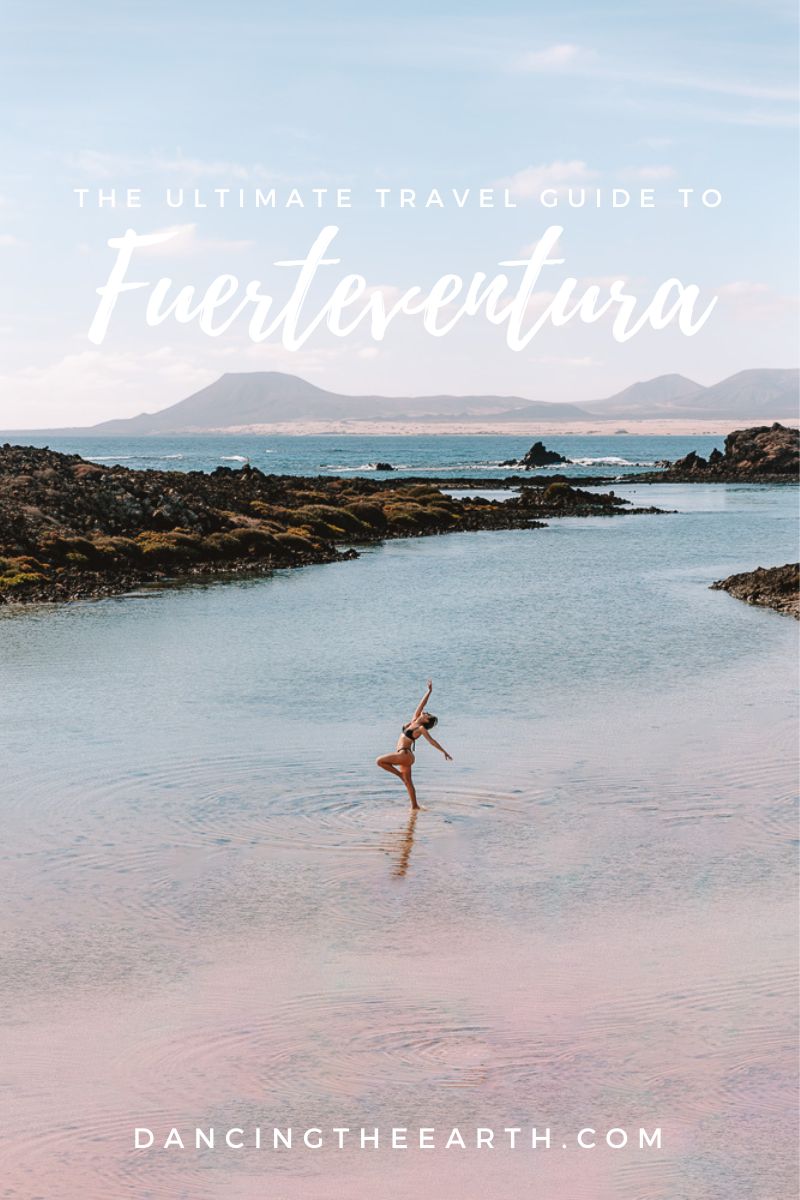
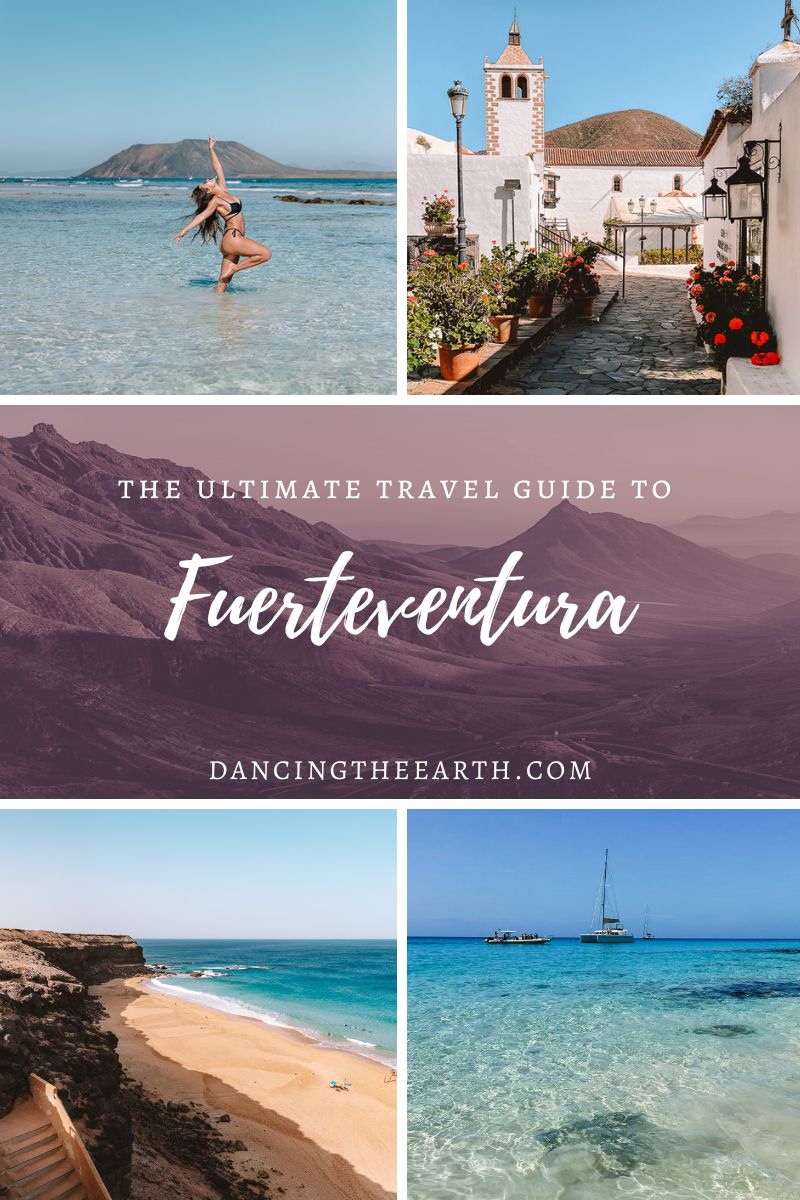

Wow! You must be a professional photographer. Your travel photos are mind-blowing. I have avoided the Canary Islabds because I thought it was just overrun with tourists at big resorts. But your photos convinced me there is a lot of wild areas to visit and see the true and unspoiled side of the Canary Islands. Do you recommend an Airbnb or hotel?
Author
I am haha thank you! I agree with you, and I think it’s mainly the case for Grand Canaria and Tenerife, and a bit Lanzarote too. But Fuerte is still wild for most of the island, which is one of the reasons why I loved it so much! The 4 hotels/apartments I’ve linked are my favorites 🙂
WE have been talking about Canary Islands for a while now…but I haven’t heard of this particular island. It looks marvelous. Just the right amount of relax and active. Keeping this…I do hope to get there in a year or so.
Author
Yes Fuerteventura isn’t the most famous island of the Canary, which makes it even better I think! I hope you can visit soon <3
What a ringing endorsement of Fuerteventura, and so many superb photos to profile the island. The beaches are amazing. Nice work.
Author
Thank you so much! The beaches really are incredible!
Your pictures are stunning. I just have been to Gran Canaria so far. Your post makes me think of going to Fuerteventura sometime in future. Thanks for sharing!
Author
Grand Canaria looks amazing! I hope you will enjoy Fuerte when you go!
Love all of the photos. We looked at visiting the Canary Islands. I’ll definitely keep this post as a reference and inspiration with the photos.
Author
Thank you! Couldn’t recommend it enough, the Canary Islands are amazing and so different one from another 🙂
Your pictures are absolutely stunning!! This definitely makes me want to visit this part of the Canary Islands. It doesn’t seem as touristy as other parts. The arid landscape is so unusual!
Author
It is such a hidden gem of the Canaries!
This looks a place that is unspoilt by lots of tourists and might need to be kept a secret for those of us who love visiting not so touristy places all the time. It looks like a place to kick back and relax and enjoy its natural beauty. Adding it to my bucket list.
Author
Totally agree with you!
Wow, the landscape looks amazing! So many great places around the island to see. Looks like a great place to spend a week!
Author
The landscapes are incredible there! Couldn’t recommend it enough!
I really enjoyed the way you have incorporated text and images seamlessly. Not only it makes the blog appealing to look, but easy to follow as well. Fuerteventura, Canary Islands is truly worth exploring.
Author
Thank you so much for your kind words! Yes Fuerteventura has so much to offer!
We visited the Canary Islands a few times but have not yet made it to Fuerteventura. It looks like a lovely spot to plan to spend a week. A day trip would only give us a small taste test. And would sure give us enough time to try some of the tasty local specialties. I love all the water spots and the variety in the things to see and do.
Author
Fuerteventura is really different from the other islands (I mean, they’re all!)! My dad just went there for a week and loved it! There’s so much more than the beaches there!
We recently got back from Tenerife, but haven’t yet made it to Fuerteventura. It looks like a great place to spend a week’s vacation.
Author
It really is! I still have to explore Tenerife 🙂
I used to live on the canaries but never went to fuerteventura! Heard so many great things and you’r pictures speak a thousand words! hoping to visit soon
Author
Aww haha there’s so much to do in the Canaries!
The water is SO amazing! Wouldn’t it also be amazing if we took care of our planet better so that ALL the water looked like this?
Author
I 100% agree!
Thank you for this great guide
Author
You’re welcome!
Fuerteventura är en fantastisk plats att vara på. Det denna som en andra hemort då vi varit där lite drygt 30 gånger. Både i El Cotillo och Corralejo. Tyvärr byggs det en del i El Cotillo. Så den gamla charmen försvinner till del. Vi har cyklat Strandvägen mella Corralejo till El Cotillo. Det är den mest oförglömliga cykelturen jag gjort någonsin. Stränderna playa Escalera kallas också Stepbeach och Playa Aguilera är en helt fantastiska strand och även La Concha stranden båda två i El Cotillo. Grandes playas i Corralejo är helt fantastiska. Jag kan skriva hur mycket som helst om denna fantastiska ö som för mig är paradiset på jorden.
Author
I agree, Fuerteventura is paradise to me too! I’m just back from 2 weeks there and I have to say that Sotavento might have topped my favorite beaches list one more time ^^